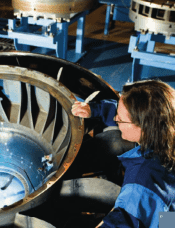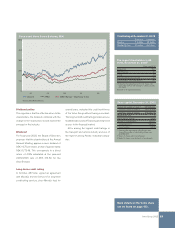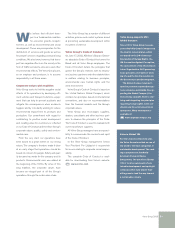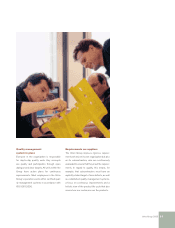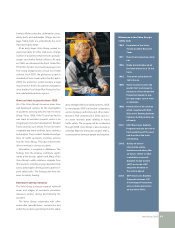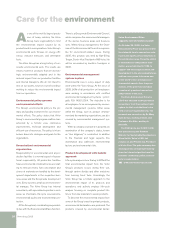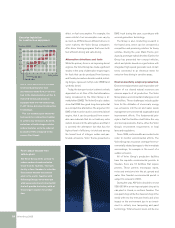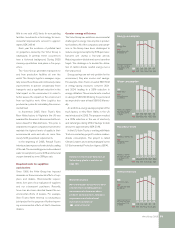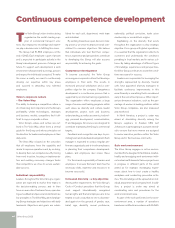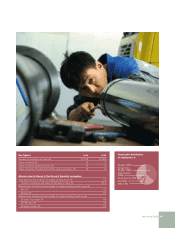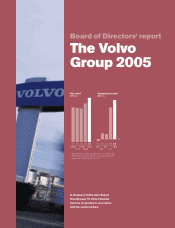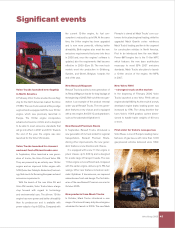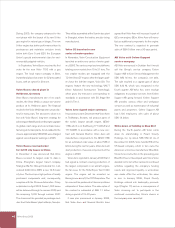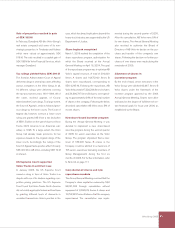Volvo 2005 Annual Report Download - page 41
Download and view the complete annual report
Please find page 41 of the 2005 Volvo annual report below. You can navigate through the pages in the report by either clicking on the pages listed below, or by using the keyword search tool below to find specific information within the annual report.
Volvo Group 2005 37
Emissions from highway
transports in the EU
Sharply reduced emissions
0
20
40
60
80
100
120
1995 2000 2005
CO
VOC
NOx
Benzene
PM-diesel
Source: ACEA
CO
SO2
2
ations include the L60E-L330E wheel loaders,
Volvo FH 12 and Volvo FM 12 trucks with Euro
3 engines, the Volvo 8500 articulated bus and
the Volvo 8500 low-entry bus. Preparations
are under way in North America to attach envir-
onmental declarations to one model each from
Mack Trucks and Volvo Trucks.
The declarations consist of three parts: pro-
duction, use and scrapping. The basic principle
is that each new product must cause less envi-
ronmental impact than the product it replaces,
which sets rigorous environmental require-
ments for the development of new products.
Designers have access to a number of differ-
ent tools for deciding which materials, designs
and production processes have the least
impact on the environment.
The “Production” section describes aspects
such as energy consumption, emissions and
waste, while the “Use” section gives details
of fuel consumption, emissions and the use
of spare parts. The third section deals with
scrapping. The Group’s products are recyc-
lable to a large extent. And as much as 95%
of s om e t ru c ks c a n b e re co ve re d . D is a ss em bl y
ma nuals are ava ilab le as an a id in the rec over y
process. The manuals describe the proce-
dur es for disma ntlin g tr ucks , a s we ll a s the
color-coding system for components, which
shows what mater ials they consis t of. Recov -
ere d ma teri als a re a lso reused in pr oduc tion.
Volvo Group’s internal environmental prize
for 2005 was awarded to Volvo 3P for a
technique for using color-impregnated plastic
in for example the front end of Volvo trucks,
wind deflector and other cab components,
instead of lacquering them. Using color-
impregnated plastic substantially reduces
both environmental impact and costs. Other
positive features are that the material saves
weight and is fully recyclable.
Reduced emissions
The Volvo Group primarily uses diesel engines
in its products, due to their high energy effi-
ciency and their potential for low emissions.
The main focus in development is on diesel
engines. Improved fuel efficiency is an effect-
All heavy trucks and buses regis-
tered in the EU from October 1,
2006 must meet the Euro 4 emis-
sions standards.
There are significant differences
concerning exhaust emissions
between an engine fulfilling the cur-
rent Euro 3 requirements and one
that meets the Euro 4 requirements.
Emissions of nitrogen oxides (NOx)
have to be reduced from 5 to 3.5
g/KWh, corresponding to a reduc-
tion of 30%. Particle emissions (PM)
have to be reduced from 0.1 to 0.02
g/KWh, a reduction of no less than
80%. Euro 5, which will take effect
on October 1, 2009 will require that
NOx emissions levels in accordance
with Euro 4 be halved.
ive way of reducing carbon dioxide emissions,
as well as reducing costs for the Group’s cus-
tomers.
In order to improve air quality, regulators in
many countries are placing even more strin-
gent requirements on reducing emissions,
especially of nitrogen oxides and particulates.
In the US and the EU, among other places, the
requirements are set to become considerably
more rigorous during the next few years. For
more detailed information about future emis-
sions requirements, see the fact box on this
page.
To meet these requirements, the Volvo
Group is continuously developing new engine
technology to reduce fuel consumption and
emissions.
To fulfill the new requirements for trucks
and buses due to be introduced in Europe in
2006 (Euro 4) and 2009 (Euro 5), new solu-
tions are needed for diesel engines. The
Group’s solution to meet the requirements is
diesel engines with even more efficient com-
bustion and after treatment of exhaust gases
with the additive AdBlue and Selective Cata-
lytic Reduction (SCR). In North America, the
Volvo Group has chosen to use an exhaust
recirculation system – High-performance
Exhaust Gas Recirculation (HEGR) – to reduce
emissions of nitrogen oxides (NOx), combined
with a diesel particulate filter.
H o w a v e hi c l e i s d r iv e n a l so h a s a s i g ni f i c a nt
US 10, 2010
US 07, 2007
Emission standards
for trucks and buses
0.16
0.14
0.12
0.10
0.08
0.06
0.04
0.02
0.00
Particles, g/KWh
NOx, g/KWh
012345678
Euro 2, 1996
Euro 3, 2002
Euro 4, 2006
Euro 5, 2009
US 02, 2002


